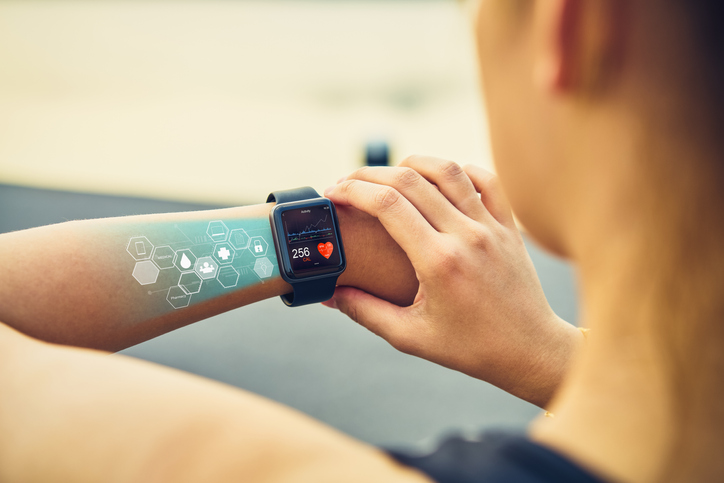
By Adam and Larry Mogelonsky
Wellness at hotels is perhaps the biggest win-win for our businesses besides sustainability investments which help the environment. For you, wellness means more revenue per guest either in add-on experiences or the ability to grow nightly rate, while the guest it leads to improved wellbeing. This is the big, big, big picture, and focusing on the micro of figuring out your brand’s unique approach within the quite ambiguous term that is ‘wellness’ is the 99% perspiration.
Alas, if there’s one guiding light, it is technology. Welltech and spatech are becoming increasingly democratized due to the principles of Moore’s Law and induced demand. That is, the pie is going to get larger for everyone as technology marches on, even as more competition within hospitality enters the fray. Moreover, just like other departments throughout the hotel, labor is perennially in short supply.
Wellness practitioners are highly specialized, which means hotels need more competitive wages to attract this talent. This is increasingly hard because, as aforementioned, more hotels are rolling out wellness programs which stiffens the demand for these individuals, while at the same time there are two prominent external factors. First, employee wellness programming within other corporates will draw from the same labor pool, and likely be able to incentivize practitioners with higher wages, more flexible hours and better benefits than a hotel company can provide. Moreover, there are now numerous platforms that enable wellness providers to be self-employed and offer their services one-to-one without the drain of administrative overhead.
All this is to say that hotels need to innovate in the wellness arena in order to alleviate the compressive forces on available labor. Technology can be that salve.
But before you look at the latest cryochamber or hyperbaric oxygen therapy (HBOT) purchase, know that wellness, like the rest of hospitality, will always be a people-first industry. So, the opening part of any strategy should be to look for ways to enhance your existing team, using technology to commercialize your existing wellness offers before expanding what the footprint of those actual offers.
Before drilling into some ideas for this data-driven commercialization, let’s address the ambiguity of wellness by listing off all that it encompasses for you to then pick your own adventure:
- Health-conscious cuisine, herbal teas and antiaging supplements
- Traditional spa treatments like massage, facials or acupuncture
- On-demand, in-room fitness or stretching programming
- Guestroom sleep programs with circadian lighting and smart beds or pillows
- Yoga, meditation or breathwork classes and other forms of group mindfulness
- Guided intermittent fasting regimens and water or juice detoxing
- Contrast therapy with saunas, hot tubs, ice baths or, as per above, cryochambers or HBOT
- Forest bathing, self-guided hikes and all manner of exploring the great outdoors
- Light and sound therapy involving near-infrared exposure or sensory deprivation tanks
- Cacao ceremonies and using borderline-legal psychedelics like psilocybin or ayahuasca
- Physiotherapy and other one-on-one functional restoration sessions
- Educational experiences like culinary or aromatherapy classes
- Genome analysis with one-on-one nutritional and chronotype advice
- Onsite counseling for blood work, epigenetic testing or microbiome analysis
And this isn’t even the half of it. Each one of those bullet points could be expanded out into a full page or longer, depending on how deep we want to get into the science of it. So, with that in mind, here are four considerations for expanding the use of the ‘data plumbing’, integrations, merchandising platforms and all other forms of software interfacing with guests or amongst team members so that you can get your wellness processes moving as quickly as possible.
Data-Rich Guest Profiles
The key to shaping future services, amenities, and programs lies in consolidating disjoined guest data. It comes down to a root-canal-esque task of integrating the PMS, CRS, CRM and BI systems, often necessitating a customer data platform (CDP) or robotic processing automation (RPA) to help pipe then structure the data into one unified system.
The grand objective here is to gain a more precise understanding of high-spending guest segments and emerging trends to guide wellness programming rollouts and marketing to return guests. As a very simple example, by establishing a robust connection between the restaurant’s POS and the PMS, you can not only identify the proportion of hotel guests who dined at your restaurant but also pinpoint those who opted for healthier menu selections, thereby informing what to advertise in a newsletter. Monitoring shifts in this data can also inform menu expansion strategies and packaging innovations.
Time-Based Inventory Yielding
A spa or gym or cabana is just selling space over time. But that ‘fragile inventory’ can be yielded through what’s known as ‘dynamic availability’. Whether it’s yoga sessions, guided meditation or personalized physiotherapy consultations, streamlining practitioner schedules according to where demand peaks can be done by the best-in-breed platform providers. Here, again, integrated systems are crucial to see where the demand is happening but also to facilitate online bookings so that receptionists aren’t overwhelmed with manual work.
Dynamic availability involves utilizing intelligent tools to recommend optimal days and times for specific treatments or classes so that profit-per-hour-per-space is optimized. The goal is two-fold: strategically allocate high-value services during primetime slots, and then make informed decisions about when guests are most likely to engage with these offerings.
Prearrival Cross-Selling
While foundational factors like location, rates, availability, distribution and promotional deals will remain crucial for driving bookings, many guests only really book ancillary spend in the hours, days or weeks preceding arrival. Considering this ‘guest context’, how can your incoming guests be informed about available services precisely when they are most inclined to make a purchase?
Deploying upselling platforms such as well-timed prearrival emails and automated guest comm tools capable of sending notifications via SMS or messaging apps can ensure that guests encounter your upselling offers through their preferred communication channels. Furthermore, experimentation within these platforms will provide insights to refine your approach, yielding valuable data on the conversion journey. What day before the arrival date (3, 4 or 7, for instance) garners the highest clickthrough rates for the cross-selling email? Which communication channel, be it email or WhatsApp, exhibits the greatest success in driving conversions for additional service purchases?
Mapping the Transformation
To you leave, know that guests seek inspiration from their chosen hotels to facilitate personal transformations in their home habits after departure. This inherent desire for self-actualization provides an opportunity to introduce services and amenities that can be either upsold or seamlessly integrated into the nightly rate, thereby bolstering ADR growth over the long-term by giving a strong reason for keep coming back to the property or the other hotels in the branded group.
For a tech-driven embodiment, envision tailored in-room exercise programs that sync with custom classes via an interactive TV. You might contemplate constructing a novel wellness hub featuring amenities like an infrared sauna and ice plunge tank, which involves substantial capex and staffing commitments to ensure safety. Alternatively, a more streamlined approach could involve an integrated breathwork module within your hotel app, synced with an in-room IoT device to keep guests aligned with their ongoing wellness goals.
Finally, to delve into the burgeoning mindfulness domain, an array of guided meditation apps are readily available, helping make hotels a place for cognitive introspection, mental revitalization and ‘digital detoxing’. On the wilder side, sensory deprivation tanks and sound therapy chambers, though more investment-intensive, are emerging as technologically advanced alternatives gaining traction in the mainstream wellness sphere.


